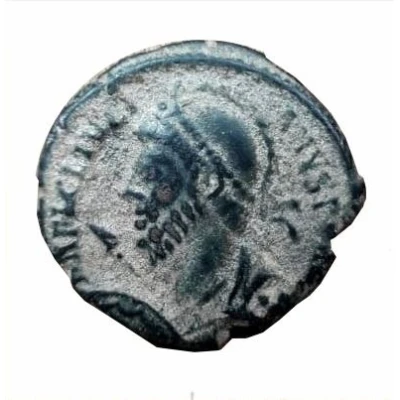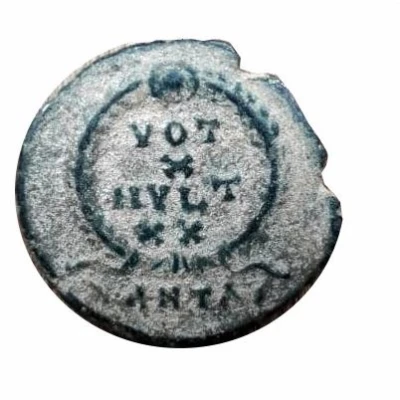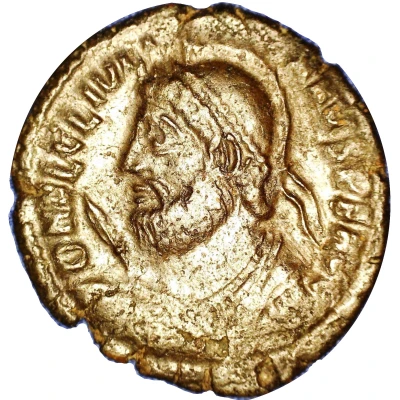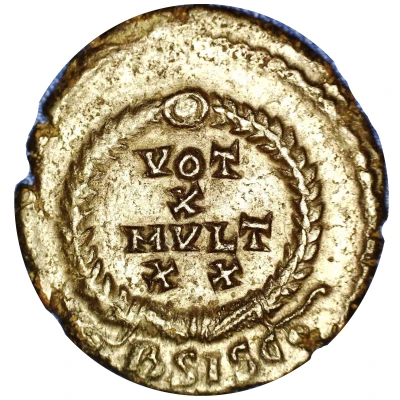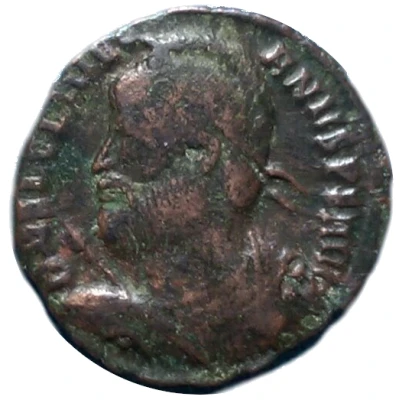
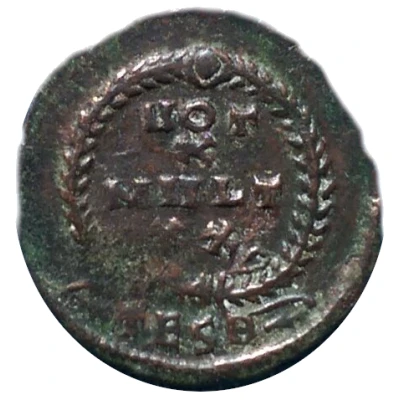

© Arusak
Follis - Julianus II VOT X MVLT XX; Thessalonica
| Bronze | 2.11 g | 18 mm |
| Issuer | Rome › Roman Empire (27 BC - 395 AD) |
|---|---|
| Emperor | Julian (360-363) |
| Type | Standard circulation coin |
| Years | 361-363 |
| Value | Follis (1⁄180) |
| Currency | Solidus, Reform of Constantine (AD 310/324 – 395) |
| Composition | Bronze |
| Weight | 2.11 g |
| Diameter | 18 mm |
| Shape | Round (irregular) |
| Technique | Hammered |
| Demonetized | Yes |
| Updated | 2024-10-04 |
| Numista | N#188198 |
|---|---|
| Rarity index | 85% |
Reverse
Four lines in laurel-wreath
(Mintmark) palm branch
Script: Latin
Lettering: VOT X MVLT XX
Interesting fact
The Follis coinage was introduced by Emperor Arcadius in 306 AD and was used until the end of the Western Roman Empire in 476 AD. It was a significant change in Roman coinage, as it replaced the previous high-value gold and silver coins with a new system based on a bronze coin with a much lower value. This change was made to address the economic challenges of the empire, including inflation and debasement of the currency. The Follis coinage was used throughout the Roman Empire, and it is an important part of Roman numismatics.
